104. Speculations aside. There is only one point in
the C text - as far as I have been able to detect - where the glyph suggests a connection
with the G text:
 |
|
Ga2-26 |
|
Ω
CANCRI
(*120) |
|
Τ AQUILAE (*303) |

 |
 |
 |
 |
|
Cb4-17 (480) |
Cb4-18 |
Cb4-19 (90) |
Cb4-20 |
|
erua marama |
tagata noho i to
mea |
kua vaha |
 |
 |
 |
|
Cb4-21 (92) |
Cb4-22 |
Cb4-23 (486) |
|
te moa |
tagata - te maro |
te tagata |
 |
 |
 |
|
Cb5-1 |
Cb5-2 (488) |
Cb5-3 |
|
Te ragi |
tagata - ragi |
kua hakagana - ki
te maro |
 |
 |
 |
 |
|
Cb5-4 |
Cb5-5 |
Cb5-6 (100) |
Cb5-7 (493) |
|
tagata mau matagi |
ihe toga maa |
ura hia |
tagata maú
kihikihi erua |
 |
 |
|
Cb5-8 |
Cb5-9 (495) |
|
te hoko huki |
kua kake te manu
puoko erua |
At the time of Hyadum II the first Greek
lettered star in Cancer (its 'leader') had
risen
heliacally ín MAY 16, which occurred 64 days
later than Alcyone (*56 at the time of
rongorongo):
|
INVISIBLY CLOSE TO THE SUN
(helical dates): |
|
MAY 14 |
15 |
16 (136 = 408 / 3) |
17 |
18 (*58 = 29 + 29) |
19 (*59 = *123 - 64) |
 |
 |
 |
 |
 |
 |
|
Ga2-24 (29
+ 25) |
Ga2-25 |
Ga2-26 (29 + 27) |
Ga2-27 (π) |
Ga2-28 |
Ga2-29 |
|
φ Gemini
(118.4) |
DRUS
= χ Carinae
(119.9) |
Ω CANCRI
(120.2) |
8h (121.7)
χ Gemini
(121.0),
NAOS
= Ζ Puppis
(121.3) |
ρ Puppis (122.0),
HEAP OF FUEL
= μ Cancri
(122.1), ζ Monocerotis(122.3),
ψ Cancri (122.6),
REGOR = γ Velorum
(122.7) |
TEGMINE
= Ζ Cancri
(123.3) |
|
July 17
(*118) |
18 |
19 (200) |
20 (*121 = 11 * 11) |
21 |
22 / 7
(*123) |
|
°July 13 |
14 |
15 (196) |
16 |
17 (*118 = 4 * 29½) |
18 |
|
'June 20 |
SOLSTICE |
22 (200 - 27) |
23 |
ST JOHN'S DAY |
25 (*96) |
|
... Midsummer is the flowering
season of the oak, which is the
tree of endurance and triumph,
and like the ash is said to
'court the lightning flash'. Its
roots are believed to extend as
deep underground as its branches
rise in the air - Virgil
mentions this - which makes it
emblematic of a god whose law
runs both in Heaven and in the
Underworld ... The month,
which takes its name from
Juppiter the oak-god, begins on
June 10th and ends of July 7th.
Midway comes St. John's Day,
June 24th, the day on which the
oak-king was sacrificially
burned alive. The Celtic year
was divided into two halves with
the second half beginning in
July, apparently after a
seven-day wake, or funeral
feast, in the oak-king's honour
...
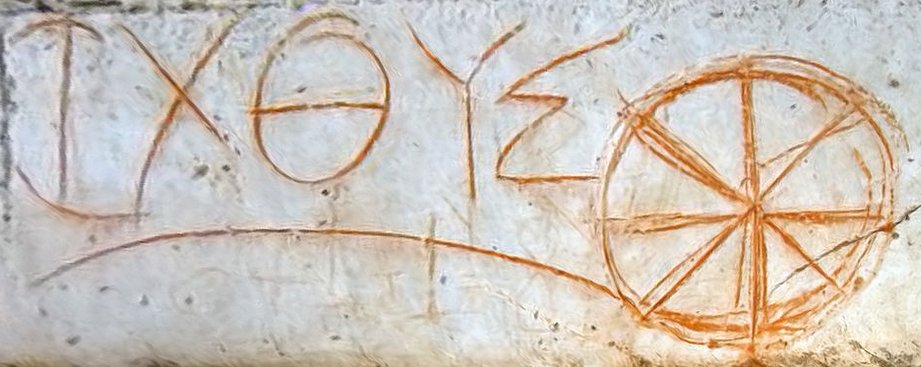
... The evening of 23 June, St.
John's Eve, is the eve of
celebration before the Feast Day
of Saint John the Baptist. The
Gospel of Luke (Luke 1:36,
56-57) states that John was born
about six months before Jesus;
therefore, the feast of John the
Baptist was fixed on 24 June,
six months before Christmas Eve
... |
|
"June 6 (157) |
Maro
7 |
8 |
9 (*80 = *121 - 41) |
HANGA
TE PAU |
11 (*82 = *96 - *14) |
|
Makoi
named the place Hanga Te Pau,
'the landing site of Ira'.
So that they would remember (?
he aringa, literally, 'as
face'), the open side of
Hanga Te Pau was given this
name. Ira got up. They
all climbed to the top of the
hill. They climbed up on the
tenth day of the month of June 'Maro'.
They reached
the side crater (te
manavai) and looked around
carefully. Makoi said,
'This is the Manavai of
Hau Maka.' They
climbed farther and reached the
top. They saw the dark abyss and
the large hole (of the crater
Rano Kau). They all said,
'Here it is, young men, the dark
abyss of Hau Maka.' They
made camp and constructed a
house. Kuukuu got up,
worked the ground, and heaped up
the earth for the yam roots.
They climbed farther and reached
the top. They saw the dark abyss
and the large hole (of the
crater Rano Kau). They
all said, 'Here it is, young
men, the dark abyss of Hau
Maka.'
They made camp and constructed a
house.
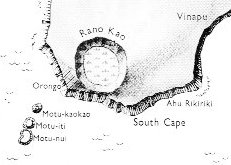 |
Metoro informed Bishop Jaussen that Cb4-20
was kua vaha - an opening. And this
is indeed what we can imagine by comparing Ga2-25
with Ga2-26:
The top was basically the same but the bottom
was opening up.
|
Vaha
Hollow; opening;
space between the fingers (vaha
rima); door cracks (vaha
papare). Vahavaha, to
fight, to wrangle, to argue with
abusive words. Vanaga.
1. Space, before
T; vaha takitua, perineum. PS
Mgv.: vaha, a space, an open
place. Mq.: vaha, separated,
not joined. Ta.: vaha, an
opening. Sa.: vasa, space,
interval. To.: vaha, vahaa,
id. Fu.: vasa, vāsaà,
id. Niuē: vahā.
2. Muscle, tendon;
vahavaha,
id. Vahahora
(vaha
1 - hora
2), spring. Vahatoga
(vaha
1 - toga
1), autumn. 3. Ta.:
vahavaha,
to disdain, to dislike. Ha.:
wahawaha,
to hate, to dislike.
Churchill.
 |
Furthermore, if the top of a glyph should
represent the Sky above and its bottom the Sea,
or perhaps the Middleworld, the Ruler (always above) was evidently characterized by
rain (ua):
 |
|
ua |
At the
time of Julius Caesar the Old Sun was here
on his way to meet with his destiny.
... But
the time of his predestined defeat by the
dark brother, Tezcatlipoca,
was ever approaching, and, knowing perfectly
the rhythm of his own destiny,
Quetzalcoatl would
make no move to stay it.
Tezcatlipoca,
therefore, said to his attendants, 'We shall
give him a drink to dull his reason and show
him his own face in a mirror; then, surely,
he will be lost'. And he said to the
servants of the good king, 'Go tell your
master that I have come to show him his own
flesh!' But when the message was brought to
Quetzalcoatl,
the aging monarch said, 'What does he call
my own flesh? Go and ask!' And when the
other was admitted to his presence: 'What is
this, my flesh, that you would show me?'
Tezcatlipoca
answered, 'My Lord and Priest, look now at
your flesh; know yourself; see yourself as
you are seen by others!' And he presented
the mirror. Whereupon, seeing his own face
in that mirror, Quetzalcoatl
immediately cried out, 'How is it possible
that my subjects should look upon me without
fright? Well might they flee from before me.
For how can a man remain among them when he
is filled as I am with foul sores, his old
face wrinkled and of an aspect so loathsome?
I shall be seen no more, I shall no longer
terrify my people'. Presented the drink to
quaff, he refused it, saying that he was
ill; but urged to taste it from the tip of
his finger, he did so and was immediately
overpowered by its magic. He lifted the bowl
and was drunk. He sent for
Quetzalpetlatl, his
sister, who dwelt on the Mountain
Nonoalco.
She
came, and her brother gave her the bowl, so
that she too was drunk. And with all reason
forgotten, the two that night neither said
prayers nor went to the bath, but sank
asleep together on the floor.
And in the
morning Quetzalcoatl
said, in shame, 'I have sinned [hakaturou];
the stain of my name cannot be erased. I am
not fit to rule this people. Let them build
a habitation for me deep under the ground;
let them bury my bright treasures in the
earth; let them throw the glowing gold and
shining stones into the Precious Waters
where I take my nightly bath ...
MAY 16
(136) was 64 days earlier in the Sun
calendar than day 200 (July 19). Precession
had moved the leading star in Cancer ahead
with 64 days. Similarly was heliacal Alcyone
now in May 16 (136) and not in day 136 - 64
= 72 (MARCH 13) = 360 / 5.
|
ALCYONE |
Ω CANCRI |
|
May 16 |
136 |
8 * 17 |
July 19 |
200 |
8 * 25 |
|
MARCH 13 |
72 |
8 * 9 |
MAY 16 |
136 |
8 * 17 |
|
8 * 8 = 64 |
8 * 8 = 64 |
But at
the time of Hyadum II people may have
defined 'heliacal' as the time when the star
in question returned to visibility after
having been too close to the Sun for
observation.
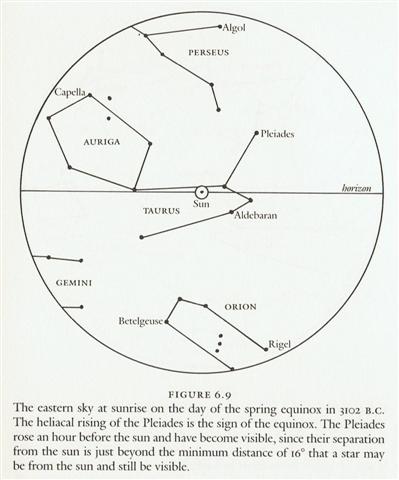
Alcyone would then have been
regarded as 'heliacal' in day 72 (MARCH 13)
+ 16 = 88 (MARCH 29). Similarly should we
add 16 days to MAY 16 (136) in order to find
its
'heliacal' day: 136 + 16 = 152 (JUNE 1).
|
ALCYONE |
Ω CANCRI |
|
May 16 |
136 |
8 * 17 |
July 19 |
200 |
8 * 25 |
|
MARCH 29 |
88 |
8 * 11 |
JUNE 1 |
152 |
8 * 19 |
|
8 * 6 = 48 = 64 - 16 |
8 * 6 = 48 = 64 - 16 |
The
reason for the date Maro 1 (152)
given in Ms. E as
the time when the canoe of Ira became
visible at the horizon seems here to have become clear.
Viz., at the time of Hyadum II day 152 had been
the 'heliacal' date JUNE 1 when the
first star in Cancer had returned to
visibility - not at the (true) heliacal
position of Castor in "June 1 (152).
July
19 (*120, ω
Cancri) - July 12 (*113, Castor) = 7 right ascension
days. July
12 (193, Castor) corresponded to "June 1
(152 = 193 - 41) and July 19 (200, ω Cancri)
corresponded not only to "June 8 (159) but also to MAY 16 (136) + 16 = 152 (JUNE 1),
when
Ω Cancri had returned to
visibility at the horizon in the east.
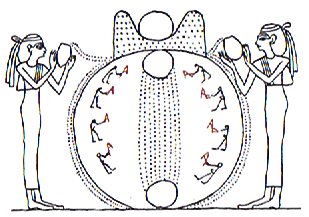
By counting the 'rain
droplets' describing the Pair of Mountains
in the north and in the south we will here
find the number to be 80. The 9 'rivers'
carry 233 'drops'. 80 + 233 = 313 = 314 - 1. The reason for Gregory XIII to change
the Julian equinox date (84) to 4 less was
hardly due to a scientific correction of a
faulty old date. 8 * 10 = 80.
... Ecclesiastically, the equinox is
reckoned to be on 21 March (even though the
equinox occurs, astronomically speaking, on
20 March in most years)
...
|
MAY 8 (2 * 64) |
9 (152 + 41 - 64) |
10 (130) |
11 |
12 |
13 (*53) |
 |
 |
 |
 |
 |
 |
|
Ga2-18 (2 * 24) |
Ga2-19 |
Ga2-20 (130 - 80) |
Ga2-21 |
Ga2-22 |
Ga2-23 |
|
Ghost-23 (?)
ρ Gemini (?) (112.1),
Eskimo Nebula = NGC2392 Gemini
(112.2) |
Al Dhirā'-5 (Forearm)
/
Punarvasu-7 /
Mash-mashu-Mahrū-10 (Western
One of the Twins)
CASTOR
= α Gemini
(113.4) |
ANA-TAHUA-VAHINE-O-TOA-TE-MANAVA-7
(Pillar for elocution)
υ Gemini (114.0),
MARKAB (Κ in ARGO NAVIS)
(114.7), ο Gemini (114.8),
PROCYON
= α Canis Minoris
(114.9) |
α Monocerotis
(115.4), σ Gemini (115.7) |
Mash-mashu-arkū-11
(Eastern One of the Twins)
κ Gemini (116.1),
POLLUX
= β Gemini
(116.2), π Gemini (116.9) |
AZMIDISKE (Ξ in ARGO NAVIS)
(117.4) |
|
July 11 |
12 (193) |
13 |
14 (*115) |
15 |
16 |
|
°July 7 |
8 |
9 |
10 (*111) |
11 |
12 (193) |
|
'June 14 |
15 |
16 |
17 (*88) |
18 |
19 (*90) |
|
"May 31 |
Maro 1 (152) |
2 |
3 |
4 |
5 (*76 = *53 + 23) |
|
... On the twenty-fifth day of
the first month (Vaitu Nui),
Ira and Makoi set
sail; on the first day of June (Maro),
the bow of Ira's canoe
touched land again.
Ira's
canoe appeared on the distant
horizon, came closer on its
course, and sailed along, and
finally (one) could see the (new
home) land.

|
|
MAY 14 |
15 (500 = 135 + 365) |
16 (136 = 408 / 3) |
17 (402 - 265) |
18 |
19 (*59) |
|
Nga
Kope Ririva Tutuu Vai A Te
Taanga
(=
Ξ, Χ, Ζ in ARGO NAVIS?) |
 |
 |
 |
 |
 |
 |
|
Ga2-24 |
Ga2-25 |
Ga2-26 |
Ga2-27 (π) |
Ga2-28 |
Ga2-29 (59) |
|
φ Gemini (118.4) |
DRUS (Χ in ARGO NAVIS)
(119.9) |
Ω CANCRI
(120.2) |
8h (121.7)
χ Gemini (121.0),
NAOS (Ζ in ARGO NAVIS)
(121.3) |
Ρ in ARGO NAVIS
(122.0),
HEAP OF FUEL = μ Cancri
(122.1), ζ Monocerotis
(122.3), ψ Cancri (122.6),
REGOR (Γ in ARGO NAVIS)
(122.7) |
TEGMINE
= ζ Cancri
(123.3) |
|
July 17 |
18 |
19 (200) |
20 (*121 = 11 * 11) |
21 |
22 / 7 |
|
°July 13 |
14 |
15 (196) |
16 |
17 (*118 = 4 * 29½) |
18 |
|
'June 20 |
SOLSTICE |
(200 - 27 = 159 + 14) |
23 |
ST JOHN'S DAY |
25 (*96) |
|
... Midsummer is the
flowering season of the oak,
which is the tree of
endurance and triumph, and
like the ash is said to
'court the lightning flash'.
Its roots are believed to
extend as deep underground
as its branches rise in the
air - Virgil mentions this -
which makes it emblematic of
a god whose law runs both in
Heaven and in the Underworld
... The month,
which takes its name from
Juppiter the oak-god, begins
on June 10th and ends of
July 7th. Midway comes St.
John's Day, June 24th, the
day on which the oak-king
was sacrificially burned
alive. The Celtic year was
divided into two halves with
the second half beginning in
July, apparently after a
seven-day wake, or funeral
feast, in the oak-king's
honour ... |
|
"June 6 (157) |
Maro
7 |
8 |
9 (*80 = *121 - 41) |
HANGA
TE PAU |
11 (*82 = *96 - *14) |
|
The canoe reached the islets
(off the coast), and Ira
saw that there were three
such islets. Ira
said, 'Hey you, crew of
young men, the vision of
Hau Maka, our father,
which he revealed to me, has
come true. There are the
handsome sons of Te
Taanga, who are standing
in the water, for this is
the name that the dream soul
of Hau Maka gave
them. Unforgotten (? kai
viri kai viri) are they,
these three. And therefore
this is the (right) land
lying there; this is Te
Pito O Te Kainga, which
also received its name from
the dream soul.'
He ui a Ira.ko te motu
etoru.he ki a Ira.he ro
korua e kau a repa e ku ketu
ana te urunga.a Hau maka o
to tatou matua.i hakahi mai
ai kia au.ko nga kope ririva
tutuu vai a te taanga.te
ingoa o te motu ena etoru i
nape ai e te kuhane o Hau
maka.
Ira saw that there were
three such islets. (E:17)
Makoi
named the place Hanga Te
Pau, 'the landing site
of Ira'. So that they
would remember (? he
aringa, literally, 'as
face'), the open side of
Hanga Te Pau was given
this name. Ira got
up. They all climbed to the
top of the hill. They
climbed up on the tenth day
of the month of June 'Maro'. |
We cannot rule out
the possibility that the creators of Manuscript E
played with the dates, moving with
ease between the diffent frames in a
way which resembled the
way the rongorongo texts were
flowing
in precessional time-space.
 |
 |
 |
|
Cb3-13
(454 =
392 +
62) |
Cb3-14
(63) |
Cb3-15 |
|
manu
rere |
tagata -
hanau
hia |
kiore -
henua |
|
INVISIBLY
CLOSE TO
THE SUN
(helical
dates): |
|
APRIL
15 |
16 (106) |
17 (*27) |
|
PRAJA-PĀTI
= δ
Aurigae
(*89) |
*90
(= 106 -
16) |
*91
= *27 +
64 |
 |
|
CLOSE TO
THE FULL
MOON
(and
nakshatra
dates): |
|
OCTOBER
15 (288) |
16 |
17
(*210) |
|
*272
= 2 *
136 |
NASH = γ
Sagittarii
(*273) |
*274
= *210 +
64 |
|
... The
ubiquitous
288 was
also
(cfr
JANUARY
3) the
day
number
the Pope
Gregory
XIII had
decided
on for
launching
his new
calendar:
... The
Julian
calendar
day
Thursday,
4
October
1582 was
followed
by the
first
day of
the
Gregorian
calendar,
Friday,
15
October
1582
(the
cycle of
weekdays
was not
affected)
...
But at
the time
of
rongorongo
- after
the
precession
had
corrected
his
error in
not
going
all the
way down
to
Caesar,
only
down to
325 AD
(the
Council
of
Nicaea)
- day
288 (=
325 -
37) had
become
the
proper
place
for
Antares
to rise
with the
Sun.
Tangaroa
Uri 15
("October
15) was
when the
Royal
Double
Canoe
was
reaching
Easter
Island.
... The
canoes
of
Ava Rei
Pua
and of
Hotu
were
seen
near the
(off-shore)
islets.
On the
fifteenth
day of
the
month of
October
(tangaroa
uri)
the
canoe of
Hotu
and the
canoe of
Ava
Rei Pua
landed.
On the
fifteenth
day of
the
month of
October
(tangaroa
uri),
Nonoma
left the
house
during
the
night to
urinate
outside
...
The
yellow
urine
was an
excellent
fertilizer
and a
beckoning
sign for
the Sun
King. |

...
Gronw
Pebyr,
who
figures
as the
lord of
Penllyn
- 'Lord
of the
Lake' -
which
was also
the
title of
Tegid
Voel,
Cerridwen's
husband,
is
really
Llew's
twin and
tanist
...
Gronw
reigns
during
the
second
half of
the
year,
after
Llew's
sacrificial
murder;
and the
weary
stag
whom he
kills
and
flays
outside
Llew's
castle
stands
for Llew
himself
(a 'stag
of seven
fights').
This
constant
shift in
symbolic
values
makes
the
allegory
difficult
for the
prose-minded
reader
to
follow,
but to
the poet
who
remembers
the fate
of the
pastoral
Hercules
the
sense is
clear:
after
despatching
Llew
with the
dart
hurled
at him
from
Bryn
Kyvergyr,
Gronw
flays
him,
cuts him
to
pieces
and
distributes
the
pieces
among
his
merry-men.
The clue
is given
in the
phrase
'baiting
his
dogs'.
Math had
similarly
made a
stag of
his
rival
Gilvaethwy,
earlier
in the
story.
It seems
likely
that
Llew's
mediaeval
successor,
Red
Robin
Hood,
was also
once
worshipped
as a
stag.
His
presence
at the
Abbot's
Bromley
Horn
Dance
would be
difficult
to
account
for
otherwise,
and
stag's
horn
moss is
sometimes
called
Robin
Hood's
Hatband.
In May,
the stag
puts on
his red
summer
coat.
Llew
visits
the
Castle
of
Arianrhod
in a
coracle
of weed
and
sedge.
The
coracle
is the
same old
harvest
basket
in which
nearly
every
antique
Sun-god
makes
his New
Year
voyage;
and the
virgin
princess,
his
mother,
is
always
waiting
to greet
him on
the bank.
As has
already
been
mentioned,
the
Delphians
worshipped
Dionysus
once a
year as
the
new-born
child,
Liknites,
'the
Child in
the
Harvest
Basket',
which
was a
shovel-shaped
basket
of rush
and
osier
used as
a
harvest
basket,
a
cradle,
a
manger,
and a
winnowing-fan
for
tossing
the
grain up
into the
air
against
the
wind, to
separate
it from
the
chaff.
The
worship
of the
Divine
Child
was
established
in
Minoan
Crete,
its most
famous
early
home in
Europe.
In 1903,
on the
site of
the
temple
of
Dictaean
Zeues -
the Zeus
who was
yearly
born in
Rhea's
cave at
Dicte
near
Cnossos,
where
Pythagoras
spent
'thrice
nine
hallowed
days' of
his
initiation
- was
found a
Greek
hymn
which
seems to
preserve
the
original
Minoan
formula
in which
the
gypsum-powdered,
sword-dancing
Curetes,
or
tutors,
saluted
the
Child at
his
birthday
feast.
In it he
is
hailed
as 'the
Cronian
one' who
comes
yearly
to Dicte
mounted
on a sow
and
escorted
by a
spirit-throng,
and
begged
for
peace
and
plenty
as a
reward
for
their
joyful
leaps.
The
tradition
preserved
by
Hyginus
in his
Poetic
Astronomy
that the
constellation
Capricorn
('He-goat')
was
Zeus's
foster-brother
Aegipan,
the Kid
of the
Goat
Amalthea
whose
horn
Zeus
also
placed
among
the
stars,
shows
that
Zeus was
born at
mid-winter
when the
Sun
entered
the
house of
Capricorn.
The date
is
confirmed
by the
alternative
version
of the
myth,
that he
was
suckled
by a sow
-
evidently
the one
on whose
back he
yearly
rode
into
Dicte -
since in
Egypt
swine's
flesh
and milk
were
permitted
food
only at
the
mid-winter
festival.
That the
Sun-gods
Dionysus,
Apollo
and
Mithras
were all
also
reputedly
born at
the
Winter
solstice
is well
known,
and the
Christian
Church
first
fixed
the
Nativity
feast of
Jesus
Christ
at the
same
season,
in the
year
A.D.
273.
St.
Chrysostom,
a
century
later,
said
that the
intention
was that
'while
the
heathen
were
busied
with
their
profane
rites
the
Christians
might
perform
their
holy
ones
without
disturbance',
but
justified
the date
as
suitable
for one
who was
'the Sun
of
Righteousness'.
Another
confirmation
of the
date is
that
Zeus was
the son
of
Cronos,
whom we
have
securely
identified
with
Fearn,
or Bran,
the god
of the F
month in
the
Beth-Luis-Nion.
If one
reckons
back 280
days
from the
Winter
Solstice,
that is
to say
ten
months
of the
Beth-Luis-Nion
calendar,
the
normal
period
of human
gestation,
one
comes to
the
first
day of
Fearn.
(Similarly,
reckoning
280 days
forward
from the
Winter
Solstice,
one
comes to
the
first
day of
the G
month,
Gore,
sacred
to
Dionysus;
Dionysus
the vine
and
ivy-god,
as
opposed
to the
Sun-god,
was son
to
Zeus.)
Cuchulain
was born
as the
result
of his
mother's
swallowing
a
may-fly;
but in
Ireland
may-flies
often
appear
in late
March,
so his
birthday
was
probably
the same
...
|
| 1 |
Horn |
α Virginis (Spica) |
Crocodile |
(202.7) |
Oct 9 (282) |
282 = 265 + 17 |
| 2 |
Neck |
κ Virginis |
Dragon |
(214.8) |
Oct 21 (294) |
294 = 282 + 12 |
| 3 |
Root |
α Librae (Zuben Elgenubi) |
Badger |
(224.2) |
Oct 31 (304) |
304 = 295 + 9 |
| 4 |
Room |
π Scorpii (Vrischika) |
Hare |
(241.3) |
Nov 17 (321) |
321 = 304 + 17 |
| 5 |
Heart |
σ Scorpii |
Fox |
(247.0) |
Nov 23 (327) |
327 = 321 + 6 |
| 6 |
Tail |
μ Scorpii (Denebakrab) |
Tiger |
(254.7) |
Nov 30 (334) |
334 = 327 + 9 |
| 7 |
Winnowing Basket |
γ Sagittarii (Nash) |
Leopard |
(273.7) |
Dec 19 (353) |
353 = 334 + 19 |
| December solstice |
|
|
APRIL 18
(92 +
16) |
19 |
20 |
21 (111
= 175 -
64) |
22 (*32) |
 |
 |
 |
 |
 |
|
Cb3-16
(457) |
Cb3-17 |
Cb3-18 |
Cb3-19
(68) |
Cb3-20
(24 +
45) |
|
henua
kua hoi |
kua ka
te ahi o
te henua |
o te
henua
kua hoi |
ko te
henua
kua vero
te ahi |
kiore -
henua |
|
INVISIBLY
CLOSE TO
THE SUN
(helical
dates): |
|
Ξ
Orionis |
TEJAT
PRIOR =
Η Gemini |
FURUD =
Ζ Canis
Majoris
|
TEJAT
POSTERIOR
= Μ
Gemini |
*96 |
|
SOLSTICE |
June 22
(173) |
23 |
ST JOHNS
DAY |
25 |
|
'May 25 |
26 (146
= 173 -
27) |
27 |
28 (*68) |
29 |
|
"May 11 |
12 (173
- 41 =
132) |
13 |
14 (*54) |
15 |
|
CLOSE TO
THE FULL
MOON
(and
nakshatra
dates): |
|
*275 |
Η
Sagittarii |
KAUS
MEDIUS =
Δ
Sagittarii |
KAUS
AUSTRALIS
= Ε
Sagittarii |
KAUS
BOREALIS
= Λ
Sagittarii
|
|
OCTOBER
18 (291) |
19 |
20 |
21 (*214
= *31 +
183) |
22 (295
= 359 -
64) |
|
SOLSTICE |
22 (173
+ 183 =
356) |
23 (*94
+ 183 =
*277) |
CHRISTMAS
EVE |
December
25 |
|
'October
24 |
25 (356
- 27 =
329) |
26
(*250) |
27 |
28 |
|
"November
10 (314) |
11 |
12
(*236) |
13 |
14 |
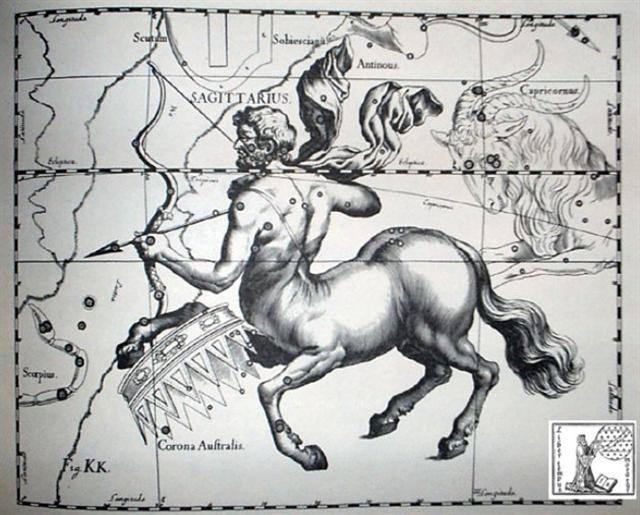 |
|
APRIL
23 |
24 |
25
(115) |
26 |
 |
 |
 |
 |
|
Cb3-21 |
Cb3-22 |
Cb4-1
(464) |
Cb4-2
(73) |
|
manu
rere
i te
taketake |
te
henua
-
mau
i te
taketake |
manu
rere |
kiore
-
henua |
|
...
The
specific
epithet
taketake
is
Māori
for
long
established,
ancient,
or
original
... |
|
CLOSE
TO
THE
FULL
MOON
(and
nakshatra
dates): |
|
OCTOBER
23
(*216) |
VEGA
(*281
=
*217
+
64) |
25 |
26
(299
=
*283
+ 80
-
64) |
|
"Ira,
Raparenga,
Uure,
Nonoma,
and
Ringiringi
got
up
and
left
the
'Dark
abyss
of
Hau
Maka'
(i.e.,
Rano
Kau),
arrived
at
Hanga
Te
Pau,
put
the
canoe
into
the
water,
and
sailed
off
to
Hiva,
to
Maori.
Ira
left
on
the
twenty-fifth
day
of
the
month
of
October
(Tangaroa
Uri)."
(E:86) |
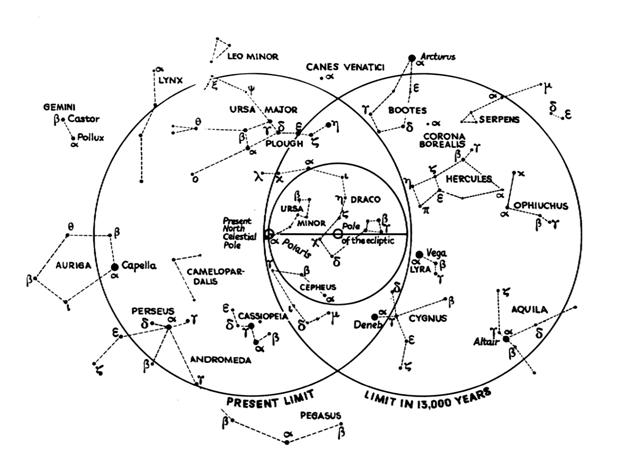 |
|







































